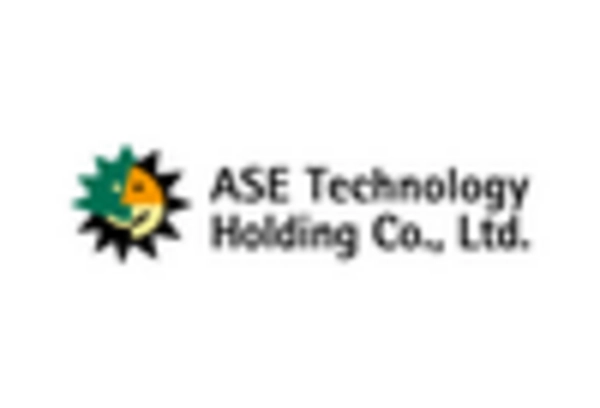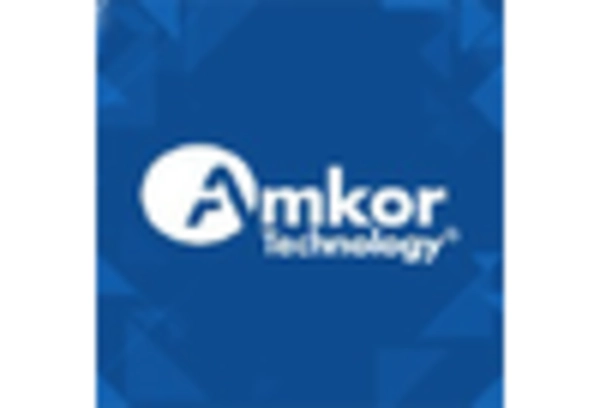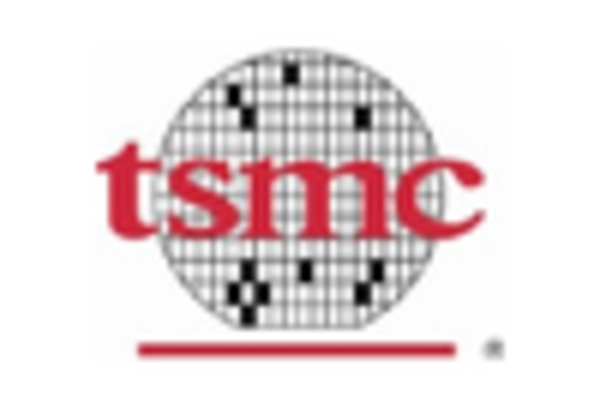Emergence of IoT Applications
The Semiconductor Back-End Market Industry is witnessing a transformative shift due to the emergence of Internet of Things (IoT) applications. As industries increasingly adopt IoT solutions, the demand for semiconductors that facilitate connectivity and data processing is expected to rise significantly. By 2025, the IoT semiconductor market is anticipated to reach over 30 billion USD, highlighting the critical role of back-end processes in delivering reliable and efficient devices. This trend compels manufacturers within the Semiconductor Back-End Market Industry to focus on developing specialized packaging and assembly techniques that cater to the unique requirements of IoT devices, thereby enhancing their market competitiveness.
Expansion of Automotive Electronics
The Semiconductor Back-End Market Industry is significantly impacted by the expansion of automotive electronics, particularly with the rise of electric vehicles (EVs) and advanced driver-assistance systems (ADAS). In 2025, the automotive semiconductor market is expected to exceed 50 billion USD, reflecting a robust demand for back-end processes that support these technologies. As vehicles become increasingly reliant on sophisticated electronic systems, the need for reliable semiconductor solutions becomes critical. This trend compels manufacturers in the Semiconductor Back-End Market Industry to adapt their processes to accommodate higher volumes and more complex designs, ensuring that they can meet the evolving needs of the automotive sector.
Rising Demand for Consumer Electronics
The Semiconductor Back-End Market Industry is experiencing a notable surge in demand driven by the increasing consumption of consumer electronics. As more households adopt smart devices, the need for efficient semiconductor solutions becomes paramount. In 2025, the market for consumer electronics is projected to reach approximately 1 trillion USD, which directly influences the semiconductor back-end processes. This growth necessitates advanced packaging and assembly techniques to meet the performance and miniaturization requirements of modern devices. Consequently, companies within the Semiconductor Back-End Market Industry are likely to invest in innovative technologies to enhance production efficiency and product reliability, thereby positioning themselves favorably in a competitive landscape.
Increased Investment in Semiconductor R&D
The Semiconductor Back-End Market Industry is benefiting from increased investment in research and development (R&D) aimed at advancing semiconductor technologies. As companies strive to innovate and maintain a competitive edge, R&D expenditures are projected to rise significantly, potentially exceeding 100 billion USD by 2025. This investment is likely to focus on enhancing back-end processes, including packaging, testing, and assembly, to improve performance and reduce costs. The emphasis on R&D within the Semiconductor Back-End Market Industry not only fosters technological advancements but also encourages collaboration among industry players, ultimately driving growth and innovation across the sector.
Growth in Telecommunications Infrastructure
The Semiconductor Back-End Market Industry is poised for growth due to the ongoing expansion of telecommunications infrastructure, particularly with the rollout of 5G networks. The global investment in 5G infrastructure is projected to surpass 300 billion USD by 2025, creating a substantial demand for semiconductors that support high-speed data transmission and connectivity. This expansion necessitates advanced back-end processes to ensure the reliability and performance of semiconductor devices. As telecommunications companies seek to enhance their service offerings, the Semiconductor Back-End Market Industry must innovate and optimize its production capabilities to meet the increasing requirements for speed and efficiency.















Leave a Comment